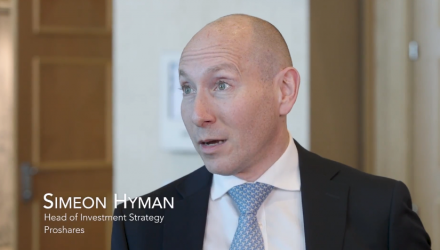An ETF like the ProShares Short 20+ Year Treasury (NYSEArca: TBF) may provide a simple short or inverse exposure to long-term Treasuries. For more aggressive traders, the ProShares UltraShort 20+ Year Treasury (NYSEArca: TBT) tries to reflect the -2x or -200% daily performance of the Barclays U.S. 20+ Year Treasury Bond Index, and the ProShares UltraPro Short 20+ Year Treasury (NYSEArca: TTT) takes the -3x or -300% daily performance of the Barclays U.S. 20+ Year Treasury Bond Index.
Another option that has recently hit the market includes ETFs that specifically incorporate an interest-rate hedging factor in their indexing methodology to help investors generate the same yields they have become accustomed to without the negative price effects of rising rates.
For instance, the ProShares High Yield Interest Rate Hedged ETF (Cboe: HYHG) and ProShares Investment Grade-Interest Rate Hedged ETF (Cboe: IGHG) are two rate-hedged bond ETFs that achieve their diminished rate-risk status by shorting Treasury notes. The underlying portfolio shows a near-zero duration – duration is a measure of sensitivity to changes in interest rates, so a zero duration translates to no sensitivity to changes.
Additionally, Hyman highlighted the relatively new ProShares Equities for Rising Rates ETF (NasdaqGM: EQRR) as the first U.S. stock ETF designed to outperform traditional large-cap indices, like the S&P 500, during a rising rate environment. The ETF selects 50 components from a universe of the 500 largest companies based on market capitalization listed on the U.S. exchange that have historically outperformed during periods of rising interest rates. Over the past three months as yields on benchmark 10-year Treasury notes rose to 2.85% from 2.55%, EQRR increased 7.1%, compared to the S&P 500’s 5.0% advance.
For more ETF-related commentary from Tom Lydon and other industry experts, visit our video category.
